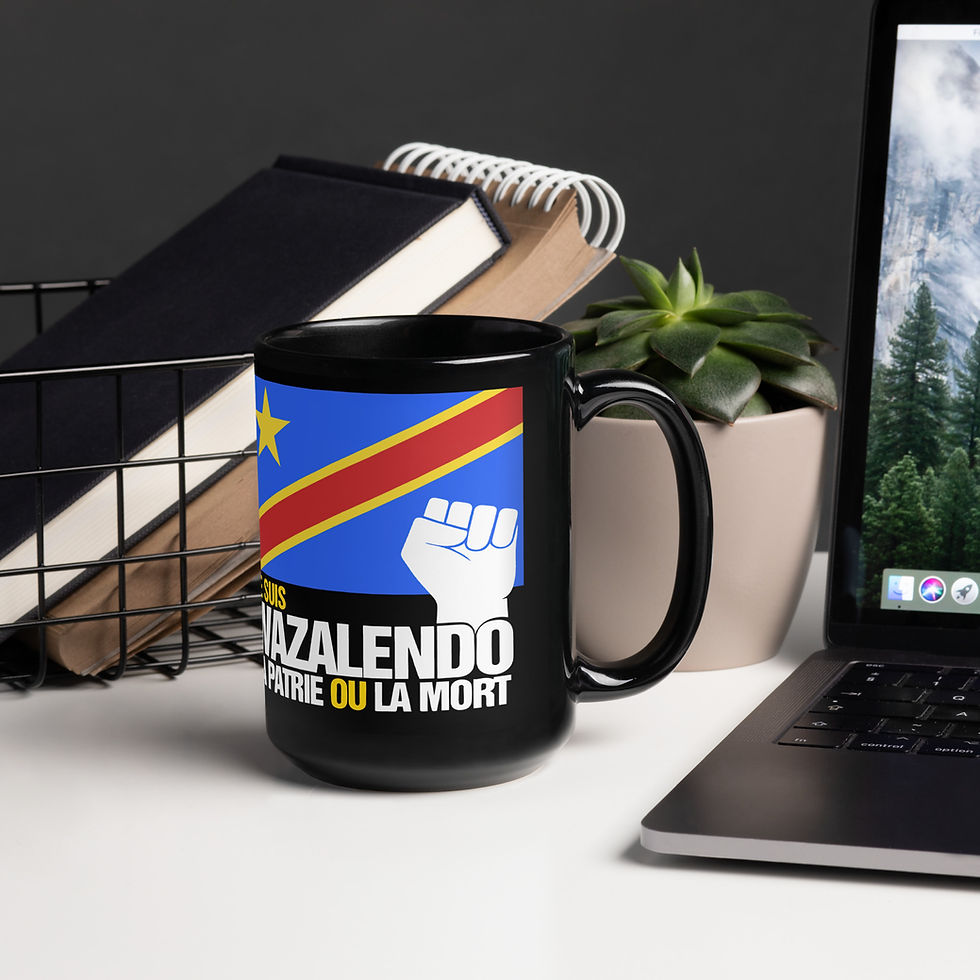Heading 2
Heading 2
Heading 2

Photo: Tariq Zaidi via CNN
How Kinshasa Became Africa’s Fashion Capital
Discover how Kinshasa’s sapeurs, fashion weeks and innovators have transformed the city into Africa’s fashion capital, blending culture, activism and economic growth
8/12/25, 5:49 AM
On a dusty boulevard in Kinshasa, men in canary‑yellow suits step lightly over puddles. Their shoes shine like mirrors, and they carry walking sticks with the flourish of Parisian flâneurs. Women in tailored silk jackets and bright turbans sway past with the poise of supermodels. They are sapeurs and sapeuses, members of a century-old subculture known as La Sape, which celebrates style as self-expression. Their flamboyant clothes radiate optimism in a country often portrayed as one of conflict. Congolese rumba legend Papa Wemba once said that his inspiration for La Sape came from his parents, who were “always well put together, always looking very smart.” Today, this sartorial spirit fuels a fashion renaissance that has turned Kinshasa into Africa’s fashion capital.
The history: from colonial imitation to cultural pride
La Sape, short for Société des Ambianceurs et des Personnes Élégantes (Society of Ambiance‑Makers and Elegant People), emerged in the 1920s when young Congolese men adopted European attire to resist colonial domination. They spent their meagre wages on Parisian suits and found freedom in clothes that defied their status. After independence in 1960, Congolese elites travelled to Europe, returning with designer wardrobes. As Papa Wemba famously put it, “white people invented the clothes, but we make an art of it”. La Sape survived government bans in the 1980s and grew into a movement that uses fashion as social activism.

Sapeurs gather to dance and compete in friendly fashion face‑offs, turning streets into runways. Photographer Tariq Zaidi, who documented sapeurs, observes that their elegance stands in stark contrast to the poverty around them. He notes that La Sape is not about expensive labels but about creating a unique look: “True Sapologie is about more than expensive labels: the true art lies in a sapeur’s ability to put together an elegant look unique to their personality.”
Female sapeuses and even children now join the movement, challenging patriarchal norms and guiding disenfranchised youth toward a cosmopolitan future. For many sapeurs, their sartorial code is linked to peace; a 62‑year‑old sapeur named Severin told Zaidi, “I don’t see how anyone in La Sape could be violent or fight. Peace means a lot to us”
Sapeurs step onto the world stage
International exposure surged in the 2010s. The British advertising campaign “Guinness Sapeurs” introduced the dandies to millions and celebrated their philosophy that one can choose who they are, regardless of circumstances. Photographer Héctor Mediavilla, who directed the short documentary for Guinness, said the men “make sacrifices to get a pair of shoes that can be worth thousands of euros,” but the important thing is the person inside the suit. The Business of Fashion magazine reported that images of flamboyant sapeurs have inspired designers globally, and Congolese stylist Franck Ndombe‑Ndombe said that “Congolese people have fashion in their blood.”. Arts specialist Antoine Fred Kabamba added that sapeur culture influences all Congolese; even those who struggle to eat still dress impeccably because looking good is part of national identity.
Runways and milestones: from Kinshasa Fashion Week to digital shows
Congo Fashion Week and Kinshasa Fashion Week
The formal runway boom began in 2011 when entrepreneur Marie‑France Idikayi founded Congo Fashion Week (CFW) to showcase Congolese designers. The first CFW, held in 2012 in Brazzaville, drew international media coverage from Vogue Italia, France24, and The Wall Street Journal, helping rebrand Congo beyond war. Idikayi’s goal was to show that Congo had talent and to provide an alternative narrative. As CFW grew, it moved between cities to adapt to security conditions and allowed diaspora designers like Adebayo Jones and Russel Ndengoue to present their collections. However, by 2020, the event faced allegations of unpaid models and funding issues, tarnishing its reputation and leading to a hiatus.

In 2013, stylist Gloria Mteyu organized the first Kinshasa Fashion Week (KFW), inviting local and diaspora designers to present their work. She told reporters she wanted to return home to show “our Congolese style” and to prove that there is more to Congo than war. KFW became a platform for designers like Okasol and Samy Okaso. At the third edition in 2015, designer Samy Okaso said they wanted the world to know there are good designers in Congo and to use fashion to promote a positive image.Fellow designer Lydie Malingumu described mixing lace, muslin, and raw silk to create modern Congolese couture. KFW events attract industry professionals, boost tourism, and celebrate the fusion of traditional textiles with contemporary silhouettes.
DRC Fashion Week and Liputa Fashion Show
With CFW suspended, new events emerged. DRC Fashion Week, held annually since 2020, aims to elevate young designers. Communication officer Chatrack Lutumba said the show’s goal is to reveal the creativity of Congolese youth and offer a platform for those who lack access to the fashion industry. Professional model Eunice Yaosiya encouraged youth to pursue their dreams, while guest Lydia Sarah El Halw declared that it is time for the DRC to take its place in African fashion. The 2024 edition featured the theme “wolo” (gold) to symbolize the country’s wealth.
During the pandemic, fashion shows moved to Goma, where the Liputa Fashion Show (LFS) merges art and activism. Designer Flore Mfuanani Nsukula said that through their clothing, “all the colours that we will express, will be full of emotions, trying to explain what we are going through in our country.” Organiser David Gulu told Africanews that the show demonstrates that life and creativity continue despite war. Attendee Olga Nganzi Samba‑Panza emphasised that the event promotes unity across African nations. These community‑driven events show how Congolese fashion fosters resilience and peace.
Digital innovation and global collaborations
Congolese designers are also embracing technology. In May 2020, U.S.-based designer Anifa Mvuemba of Hanifa staged a groundbreaking 3D digital fashion show on Instagram Live after the pandemic cancelled runway events. Her “Pink Label Congo” collection was watched by tens of thousands worldwide. Mvuemba said she had been using 3D animation to design her pieces and wanted to raise awareness of child labour in Congo’s coltan mining industry. The success of her virtual show highlighted Congo’s influence on digital fashion and underscored the link between clothes and activism. She later told Reuters that her collection draws inspiration from the way Congolese women dress.
The economic and tourism impact
Fashion has become an economic engine for Kinshasa. High‑street brands such as Hugo Boss and LC Waikiki have opened stores in the capital, recognising the city’s burgeoning middle class and love of style. The Business of Fashion noted that images of sapeurs and sapeuses inspire designers around the world and attract investors. The presence of luxury retailers signals confidence in Congo’s consumer market and creates jobs in retail and merchandising. Festivals and events also drive commerce. According to cultural analysis, Kinshasa Fashion Week attracts designers, models, and fashion enthusiasts, blending traditional and contemporary styles.
Events such as KFW and the Fête de la Musique bring local and international visitors, boosting tourism and stimulating the local economy. Vendors, artisans, and performers benefit from increased exposure and sales.
Fashion also stimulates informal economies. Sapeurs often work ordinary jobs, taxi drivers, teachers, and bricklayers, but invest in their wardrobes. Tariq Zaidi observed that sapeurs are treated like celebrities in their communities, bringing “hope and joie de vivre.” Their popularity supports local tailors, shoemakers, and second‑hand clothing markets. The Guinness advertisement and other international projects have drawn tourists curious to see sapeurs in their element, further injecting money into neighbourhood economies.
Challenges and the path ahead
Despite its vibrancy, Congo’s fashion industry faces obstacles. Decades of conflict have left the infrastructure fragile, and some events struggle with funding and organisational capacity. Congo Fashion Week suffered a scandal over unpaid models in 2020. Designers sometimes lack access to quality fabrics and equipment, forcing them to improvise. Yet these challenges have spurred innovation. Independent designers like Hanifa’s Anifa Mvuemba prove that Congolese talent can thrive globally; her digital shows circumvent logistical barriers and attract international clients. The pandemic encouraged local events to experiment with virtual streaming and outdoor runways. As global awareness of the DRC’s mineral exploitation grows, designers increasingly use their platforms to advocate for ethical supply chains
Looking forward, Kinshasa’s fashion future may rest on education and collaboration. Initiatives like UNESCO’s intangible heritage projects teach young Congolese to document and preserve cultural expressions. Partnerships with foreign fashion schools could provide training and access to global networks. Investment in infrastructure, from event venues to textile manufacturing, would nurture homegrown brands and reduce reliance on imports. Designers should continue exploring sustainable materials and digital innovation to reduce environmental impact. Above all, the city’s success lies in its ability to celebrate culture and resilience while challenging stereotypes.
Conclusion: style as sovereignty
Kinshasa’s rise as Africa’s fashion capital is not merely a story of glamour; it is a testament to the resilience and creativity of the Congolese people. From sapeurs turning poverty into art on the streets, to designers launching international runways and digital shows, Congolese fashion has reclaimed the narrative about the DRC. Designer Samy Okaso summed up the movement when he said he wanted the world to know that there are good designers in Congo and that fashion can promote a positive image of the country.
As festivals continue to draw visitors, retailers invest and young talents emerge, Kinshasa’s fashion scene will keep inspiring Africa and the world.
Keep Reading





















